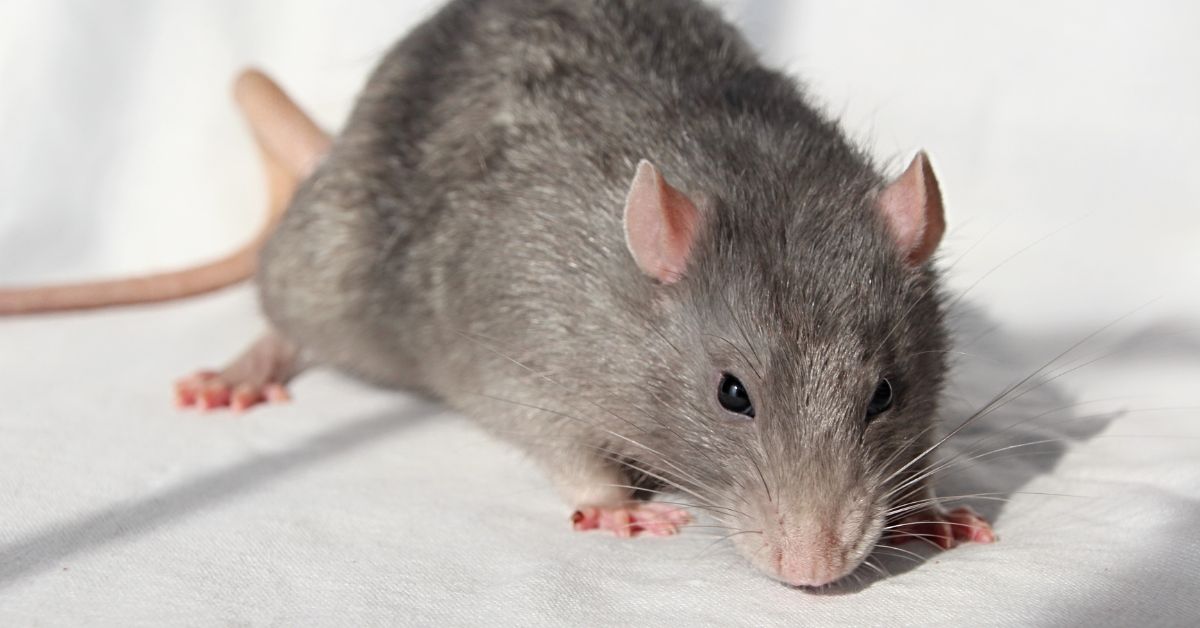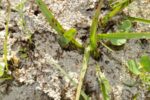
Rats vs. Mice: What Is the Difference? Are They the Same Thing?
When you spot a rodent scurrying around your home, it’s upsetting, and you may not think to or have a chance to identify whether you are infested with a rat or a mouse. Or, if you aren’t familiar with these rodents, you may not be able to spot the differences. Don’t worry, let the rodent experts at Hulett break down the differences between rats vs. mice.
Rat or House Mouse?
You may not think it’s important to know the difference between rats and mice. When you have a rodent infestation, you may not care about the exact species of the critters. All you care about is removing them from your home. However, you have a better chance of ridding your home of the infestation if you know the kind of rodent that has moved in.
Common South Florida Rodents
Rodent infestations can happen all year long, but they generally peak during wintertime, when the rodents are seeking warmth and shelter from the cold. While we’re lucky to miss out on the snow and extreme temperature changes that come with northern winters, the slight temperature dips during a South Florida winter can send rodents indoors. We see the same problem pests over and over again at Hulett. If you have rodents in your home, the odds are that it is one of three culprits:
- Roof Rats
- Norway Rats
- House Mouse
These animals thrive in South Florida and can be persistent pests that require extreme determination and persistence to eliminate for good, so rodent control is best left for the professionals. While they have many differences, they share a few things in common. They can cause damage to your home and pose a danger to your health. The roof rat, Norway rat, and house mouse all have the characteristic rodent snout, ears, incisor teeth in their upper jaw, long tails, and four short legs. But upon closer inspection, it is possible to spot several differences between rats vs. mice.
Appearance
House mice are generally smaller than rats. They range from four to six inches in length and can be light grey, white, or brown. Their bellies typically have lighter shading than the rest of their bodies. It can be difficult to tell if you have a baby rat vs. a mouse, so do not assume you have a mouse infestation based solely on the size of one rodent.
Rats are nearly double the length of the average house mouse, with Norway rats being the largest and heaviest. Norway rats are around 10 inches long and have huskier bodies. Their bodies are covered in shaggy brown fur with black shading. A key identifying feature is that their tail is shorter than the length of their body. They also have smaller ears, and their noses are less pointed.
Whereas roof rats are eight inches in length and have slender and more athletic bodies. Their bodies are covered in smooth gray fur with black shading. Unlike the Norway rat, their rat tails are longer than the remainder of their bodies. They also have sharp noses and larger, thin ears.
Rodents are nocturnal creatures, and it may be difficult to spot one and identify these physical features. But you can use a variety of rodent behaviors and habits to determine the species of your unwanted visitors. Or, better yet, leave it up to the professionals to inspect and diagnose your infestation, and discuss with you the proper treatment method based on the type of rodent.
Diet
Rodents will eat whatever is available, but house mice and rats do have food preferences. The food sources where you find gnaw marks or other evidence of rodent feeding may provide helpful information for identifying the rodents.
Cartoons may lead you to believe that house mice love cheese, but grains, fruits, and seeds are their favorite foods. You may find that these carb lovers munch on any cereal in your pantry. House mice can stay hydrated solely based on the moisture content of their food source but may drink up to an ounce of water a day. Norway rats have similar food preferences to house mice, but they also enjoy meats and fish. When they eat dry foods, they need an ounce or two of water per day.
Roof rats have more distinct eating preferences and behaviors. Fruit is their favorite food, and if you have fruit trees in your yard, hollowed-out fruit on the ground is a telltale sign of roof rats. They also have a distinctive way of eating grain. If they have been feasting on it, you may notice pieces of grain that look as though they have been chopped in half. They drink about an ounce of water per day. Unlike Norway rats and house mice, they change up their feeding locations frequently, making trapping and baiting more difficult.
In summary, it is critical to make sure your yard doesn’t have excess fruit on the ground from fruit trees, any containers outside that collect rainwater for drinking, that you keep a clean kitchen and sink, and that all the food on the inside of your home is packaged away and in sealed and lidded containers.
Droppings
The last thing you want to see in your home is a pile of rodent droppings, but the feces can be helpful for identification purposes. For instance, mouse droppings are only about an eighth to a quarter of an inch long, whereas rat droppings are larger, and about a half to three-quarters of an inch long. Norway rat poop is rounded at the ends, whereas roof rat droppings have pointed ends.
Rodent activity and droppings in your home is a serious matter and can potentially spread disease. If you notice rat or mice droppings in your home, you should call a professional pest control company for inspection.
Habitat
These three rodent species are happy to nest in your home or around your property. Each of them has different climbing abilities that determine the areas where they hang out and nest, and also determine where they commonly invade homes.
House mice are skilled at climbing, increasing the number of spaces they can access. They make their nests in wall voids, attics, storage boxes, cabinets, lofts, crawl spaces, basements, barns, sheds, and similar locations. To build their nests, they gather soft materials, such as shredded paper. Norway rats live in burrows underground, crawlspaces, attics, and basements. You may find them around your property in embankments near tree roots, woodpiles, the soil under buildings, and heavily overgrown weeded areas. They even hang out in sewers where they feed off of insects. Roof rats are excellent climbers and prefer to nest in the upper parts of buildings or trees, especially attics.
Breeding
Rodents can reproduce quickly, and if they are present in your home, you may soon see litters of newborn rats or mice. Every rodent species is born both blind and hairless, and they rely on their mother for protection and feeding. House mice reproduce at higher rates than rats. A single female mouse can have between seven and eight litters in a year, and each litter contains between four and 16 babies. The baby mice will reach adulthood within eight to 12 weeks when they become capable of reproduction. Norway rats have four to six litters per year, with litters ranging from six to 12 young. They are capable of reproducing around three months of age. Roof rats also produce three to six litters in a year with a litter size of between five to 10 babies. Roof rats make it to adulthood quickly, within seven to eight weeks. It’s easy to see how rodent infestations can get out of hand if you do not address the problem. This is why it is very important to call a professional pest control company as soon as you find evidence of rodent activity.
How Harmful Are Rats or Mice?
Rodents are relatively small in size, but they can do significant damage to your home and harm your health. Both rats and mice will gnaw on materials throughout your home. If they chew on electrical wires, it may cause electrical damage or even start a fire. They also target gas lines and pipes, which can lead to leaks. Rats have stronger teeth and a more powerful bite than mice, and they can gnaw through durable materials, including drywall, wood, plastic, sheetrock, and more. Replacing those materials can be costly. If rodents build nests in your heating and cooling ducts, it may eventually lead to expensive repairs of your HVAC system. Any foods that rodents feed on should be disposed of right away, and the costs to replace contaminated pantry items can add up quickly. Unfortunately, homeowner’s insurance policies typically do not cover rodent damage because they expect rodent control to be part of the regular maintenance of owning a home.
Rats and mice are responsible for spreading more than 35 diseases around the globe. Rodents can transmit diseases through their urine, feces, or saliva, and you can also catch diseases if you handle them or they bite you. Infected rats pass on diseases to ticks, fleas, and mites, and these insects can infest your home, too.
Hulett for Rodent Control
When you have rats or house mice dashing across your floors, you need a South Florida pest control company right away. An infestation of house mice, Norway rats, or roof rats is a serious concern that can damage your home and, more importantly, have a negative impact on the health of you and your family. At Hulett, we take rodent infestations seriously and have helped many homeowners throughout South Florida rid their homes of these common pests. Our experienced and friendly technicians will identify the rodents and develop a customized plan to eliminate them. We work with you to prevent the rats or mice from returning and patiently address all your questions and concerns. We know how upsetting a rodent infestation can be, and we take it as seriously as you do. So when you need effective rodent control, just call Hulett!



